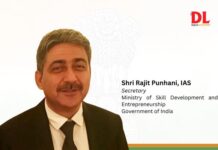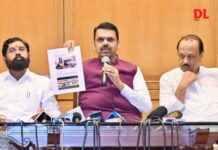How has ISRO contributed to the education initiatives in India?
ISRO’s role for promoting education has largely been in terms of using satellite connectivity to multiply the number of places where teaching can be spread. ISRO, over the past 2-3 decades, has started with Satellite Instructional Television Experiment (SITE). The Centre for Mass Communication has extensively studied satellite outreach and from there on satellite transponders are used and connectivity has been one of the key elements of outreach for programmes in education. There are also aspects like higher education, teachers’ training and probationer’s training, which ISRO has tried to address through the experience of using satellite transponders and developing programme.
ISRO has also promoted the development of softwares. Now various institutions have taken the responsibility of developing software for various aspects of education, which can then be transmitted. The effectiveness of these softwares in local languages has still to be established. They also have to be relevant in terms of enriching knowledge, or even curriculum based education.
Providing satellite connectivity in this context is essential so that you can multiply the outreach effect and transform single classroom – located in one location – into multiple virtual classrooms across the country. EDUSAT is a very useful satellite in terms of its capacity to provide educational programmes to different parts of the country. It has national and local transmissions which have been effectively demonstrated. For example, Vishveshwarya Technical University under ISRO has a very good faculty presence and lessons in physics, chemistry and mathematics are transmitted to 100 locations within the state. This level of education can never be achieved by local teachers or locally held classes. Another important element is to create a cadre of teachers who are well informed and trained.
EDUSAT is now being phased out and ISRO may have to take these steps further and anlayse how these concepts can be carried forward in terms of providing space connectivity for education. The question now is of scaling up operations and providing a sustainable service and also making sure that there is, at the level of human resource development, a very strong scientific group to develop necessary software for educational purposes.
Vocational and skills development have gained a lot of ground recently. What are your views in this field?
Vocational training centres need to identify requirements of the industry and churn out students who are more industry ready. The science and technology department can contribute towards skill development through the development of useful curriculum for locally relevant training needs. Public private partnerships can play an important role in this respect. Corporate bodies can adopt an ITI and contribute to the capacity building of that ITI to meet the requirements of a particular industry or cluster of industries. The government can contribute by providing land and infrastructure at subsidised rates, appointing teachers and keeping a dynamic curriculum. There are a host of possibilities for training in fields like agriculture and food processing. In this day and age, there is a tremendous requirement for skilled labourforce and it has now become a major national mission. That is why there is a national skill centre, which the Prime Minister has instituted, to ensure that it is addressed across diverse spectrum of activities.
As far as the question of space is concerned, training of trainers is one of the major requirements because when you talk of creating millions of skilled workers, there is an obvious need for training of trainers as well. The emphasis should be on using ISRO’s connected ICT systems for training. To some extent one can also create virtual classrooms where you can produce programmes which can be taught.
“Science and technology has to play an important role in developing some of the research based solutions which are locally relevant”
The Space Application Centre has 25-26 centres for capacity building in space research. We can provide support locally through remote sensing and related programmes and provide solutions to the states in areas like land use and land applications, environment, forest management, and water exploration. In each one of them today remote sensing centres can provide solutions locally.
How has the government supported research initiatives in promoting, supporting or encouraging local or indigenous research and development? How do you see industry linkages in this respect?
Much of today’s scientific and research support programmes have come from the Government of India and hardly 25% comes through industrial support. The government then becomes a major financial source for R&D in the country. In the 11th Five Year Plan there has been an allocation of nearly INR 72-74,000 crores from the government’s side. The government is willing to go even further for meeting research requirements of the country in areas like defence. In order to analyse how this percolates down to grassroots, there is a need to address the mechanisms of institutional framework between various states in the country. The performance of State Science and Technology Councils have not been up to the mark and there is a need to correct this situation by bringing in central agencies to help these state technology councils. Secondly, we have to rework the strength of the science and technology councils by creating better infrastructure and hiring more scientists.
A cadre of scientists has to be created who can have a focused approach to problems. If we take the example of the Northeast, there are activities like floriculture, horticulture and food processing, or biotechnology related applications. These are the areas in which science and technology solutions for development of the state can be used.
Science and technology has to play an important role in developing some of the solutions which are locally relevant and also take advantage of central agencies like DFC and CSIR and try to make use of their enormous capabilities to find solutions for their requirements locally and at state level. Currently these mechanisms have not reached a level where we can say that we are making an impact on state development. One of the key elements of our programme in the 12th Five Year Plan is to create mechanisms which can enable this to be carried forward.





















